Posts Tagged ‘smart on crime’
Posted on: November 12th, 2013 by Smart on Crime
I live a busy life. Like many of you, I wear a lot of hats in our community. I have a really hard time saying ‘no’ to people, causes, and commitments that intrigue me.
Which is how I found myself parked in gridlock on Toronto’s busy Lakeshore Drive one drizzly, grey, and miserable November evening … trying to make my way home to Waterloo from a series of meetings in the downtown. As usual, I was late. Also, as usual, I had been parenting my youngest son from afar via BBM … What’s up? Good day? How was football practice? Have you eaten? What homework do you have? Did you put the dog out? Always ending with: I love you, Peter. I love you too, Ma.
Peter’s responses were predictable. At 17, he was happy to have the house to himself. Sitting in my car, I could picture him in my mind: He came home from school, dumped his gear behind the sofa, gave the dog some love, headed straight to the fridge, and then upstairs to have a hot shower. He was likely comfortably lounging in our family room, making his way through the multitude of sports channels on cable. I knew he was safe, warm, fed, and had his beloved furry companion by his side.
As I inched my way towards a grey and dreary intersection on Lakeshore, I spotted the inevitable dance of captive motorists being courted by ‘squeegee kids’ with their proactive offers of clean windshields. Despite a 1999 provincial law that outlaws it and recent City of Toronto calls (2011) to come down hard on panhandlers, squeegeeing is the norm in Toronto: Cars stop at a light and nervous drivers avert their eyes or uncomfortably acknowledge the young people who approach their cars. I’ve been in this dance before, always leaving the dance floor with a sense of unease and emptiness.
I did the quick calculations. I was going to be the first car in line at the intersection. I had some spare change in the car, but I also needed a coffee. It was raining. I didn’t need my windows cleaned. I turned the radio up and did my best to pretend that I was an island.
I pulled up to the red light. Thoughts of Peter passed through my head: I hope he’s doing his homework.
I looked up and saw a young man standing on the boulevard. He looked nervous. He also looked wet and cold. His green eyes instantly reminded me of Peter. What if?
I couldn’t stop myself. I rolled down my window and called him over. His name was Joel. He was 17. I told him that I knew that. We chatted. I bypassed the spare change, reached into my designer handbag to open my designer wallet and gave him paper money. I gave him my business card. I asked him to call his mom. I got honked at. He very quietly thanked me. He packed up his backpack and crossed the street in front of me. He waved, walked, and then ran back to my window. He thanked me again and told me that he was going to get something to eat and that he would call his mom.
I turned off my radio. I wondered if Joel would follow through. I knew the chances were slim, but I had to believe that maybe, just maybe he would. I knew that many would ridicule me for thinking so. I had to hope.
I headed home to my son, who was still safe, warm, fed, and had his beloved furry companion by his side. I thought about my busy life and wondered if my work – the politics, the teaching, the community building, and the volunteer work – was helping or hindering my own social fabric. I love you Peter.
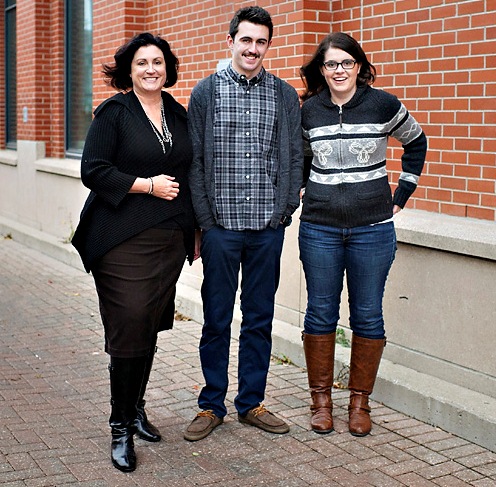
Karen Scian and her “Social Fabric”
Author: Karen Scian is a Waterloo City Councillor and Chair of the Finance and Strategic Planning Committee at the City of Waterloo. She holds a Bachelor of Science from the University of Waterloo, a Bachelor of Education from Western, and a Master of Arts in Leadership. Karen has spearheaded Waterloo’s commitment to open and transparent government by hosting innovative online events such as an All-Access Budget Townhall, Twitter Townhalls, and working with the community to revamp the City of Waterloo’s Citizen Committees. Karen is an instructor at Conestoga College’s School of Business and Hospitality, teaching Civic Engagement, Urban Studies, Ethics, and Sustainability Management to tomorrow’s leaders. She is also a trustee of the Waterloo Public Library and the Chair of the Board of Directors for Community Justice Initiatives (CJI), a local restorative justice organization.
Posted on: October 16th, 2013 by Smart on Crime
I stood at the gate in the large fence waiting for someone to notice me. “How can I help you?” came the voice over the intercom. “My name is Andrew Jackson. I’m from the Accelerator Centre and I’m here to run the Entrepreneur Session.” I replied. The gate buzzed and I walked through the gate, went up the path and entered the building. I handed over my identification, signed in and then passed through a metal detector. Five minutes later I stood at the front of a classroom with 25 women waiting for me to start talking. “Good morning” I said. “Good morning.” came the reply from the women of Grand Valley Institution for Women (GVI).
This past Saturday was the third year I have gone to Grand Valley Institution as a representative of the Accelerator Centre in order to deliver four 2-hour sessions over two weekends to the women. It has quickly become a highlight of the year for me and the numerous volunteers that help teach the course.
The Accelerator Centre is a business incubator for tech companies where we are paid to provide facilities and programming in order to help start-up companies speed up the process of becoming large, sustainable, revenue generating entities. So the inevitable question is “Why do you go to Grand Valley?” The short answer is: “because the women let us.”
Three years ago Jessica Hutchison, a hard-working and passionate person from the Region of Waterloo, approached the Accelerator Centre to see if we would be interested in presenting an entrepreneurial course to the women at GVI. After some internal discussions we agreed we would do it.
Our first chore was to figure out what the content of the sessions would be. We have done presentations numerous times before on why people should become entrepreneurs and the skills and knowledge they need to do so. It was very important to us that we didn’t simplify our sessions for the women but instead we tailored the information to make it appropriate for women who would be looking to form their own company when they left GVI or would be looking to set themselves up for employment after some tough times.
The next thing to do was figure out who would come with us to present the material. Again, it was important to us to bring the same top-notch, experienced people that we would use for any of our presentations. We are very lucky to have CEOs and upper management level people volunteer their weekend time and join us at Grand Valley. As I tell the women, we bring the best available people because we believe they deserve the best available people.
The first year we attended GVI we had 12 women attend the course. The last two years we have had 24 and 25 women, respectively, attend. The women are respectful and polite and ready to learn. None of them have to be there but they choose to be and that means a lot to us.
It is our hope that we are providing the women of Grand Valley Institution with some knowledge that will empower them upon their release. We know that they are in GVI for a variety of reasons and the courts have decided they warranted some form of punishment. But we also know that when they are released from prison they deserve every opportunity to reintegrate into their communities in a positive way. I look forward to the day that I can enter a business that is owned by one of the women that attended our Entrepreneur Sessions.
What impact has this experience had on me personally? Well, this past Friday I had the opportunity to talk to the Waterloo Region Crime Prevention Council about our involvement with the Grand Valley Institution. I am proud to let everybody know about the awesome feeling I get when I see the smiling faces on the women as we shake their hands and give them a certificate of completion for our course.
I had to stop talking three times to choke back my tears. But please keep that part quiet.
 Sharing the story of the Accelerator Centre with 50 Friends of Crime Prevention
Sharing the story of the Accelerator Centre with 50 Friends of Crime Prevention
Author: As Vice President, Client Services, Andrew Jackson leads the educational curriculum for Clients at the Accelerator Centre. In addition, Andrew manages the celebrated in-house mentorship program, an essential component of the Accelerator Program. As clients seek to grow their business knowledge and develop essential skills, Andrew connects them with the resources necessary for their business to achieve long term success.
Posted on: October 15th, 2013 by Smart on Crime
Surprise!! Surprise!! “Length of involvement in schooling significantly impacts participation in criminal activity”, reports the recently released Snapshot on Crime: Root Causes of Crime in Waterloo Region. It is good to have the statistical evidence to corroborate what we already know as parents, teachers, and concerned citizens.
To reframe, length of involvement in schooling increases positive life outcomes for youth. High school graduation and access to post secondary education enhances socioeconomic status in adulthood regardless of growing up in a low income family, parents’ level of education or single parent household. Good news. Although, being born poor sucks, it is not a life sentence. Education however is a big deal and exclusion from it puts you firmly on the school to jail pipeline. Education is the great leveler only if you have it, a child denied this basic human right is hurt for life and community safety is impacted. Access to post secondary education reduces the likelihood of adult criminality, increases employability, ability to stay employed and overall socio economic status. Access to education is a matter of equity and social justice, therefore addressing systemic exclusion and disenfranchisement is crucial.
This is nothing new. The Ontario Royal Commission on Learning and the Review of the Roots of Youth Violence report all decried non inclusive curriculum and recommended schools that reflect minorities and policy changes to address lack of engagement and under achievement of young males, black males, in particular. If black boys face more exclusion from the school system, youth who drop out of school are at higher risk for criminality. Black males are overrepresented in the criminal justice system; it then becomes imperative to challenge our beliefs about black boys being inherently criminal. Being young is a not a bad thing. I have yet to meet any person who was never young once. Being a male child is not bad either and there are communities where people go to any length just to have a male child. Being black is no disaster despite the media characterization of Black masculinity. But still, black males are more often the targets of physical aggression, racism, criminality and criminal victimization.
The African community always knew this. Ten years ago, we initiated an after school homework support program to promote school retention, graduation, equitable access and participation. The homework club provides a safe space where any minority child can feel at home to receive help right where they are at and develop the confidence that facilitates integration into the school system. Our neighbors in Toronto successfully advocated for Africentric schools and now have three, amid fierce debates on both sides. I do not intend to spark debates about segregation or integration. Both are not mutually exclusive.
Through our homework program, we work to mitigate the gaps in the mainstream schools. We provide culturally relevant books, resources and instructional materials that honor African and indigenous orality. We connect youth with strong black role models through career talks, job shadow and motivational talks. We immerse our volunteers, white and black, in the culture and life of the youth. Many volunteers come in wanting to help the kids, but they tell us when they leave (some never leave) that they are the ones helped significantly. Many of them want to be teachers and we gladly provide them with reference letters to get into teachers college. We also organize a parent forum to encourage parents to be their child’s best advocate, to understand the assumptions behind the streaming of students that can result in some youth not having the courses required for post secondary education which hinders their ability to maximize their potential and can permanently alter their life trajectories.
Waterloo region is now the 7th top destination for new immigrants and refugees. We cannot reverse the inflow of immigrants as immigration is Canada’s lifeline in the absence of a replacement population. We could admit only people who are not 15-24, male or black but, 20-somethings tend to settle down and have cute little babies, who soon become teenagers. What if we as a community ensured teachers are trained to recognize the world views and assumptions underlying the fear of big tall black boy children? What if teachers, police and other service providers re-examined our social construction of the black male child? Are there things Waterloo Region can learn from Toronto’s Africentric schools about how to adapt and integrate African, indigenous epistemology and pedagogical practices into mainstream schools so that we can better engage young black men? Opponents of Africentric schools describe them as temporary, not cost effective solutions and appeal to our Canadian ideals of cohesion and multiculturalism. I do not agree with either segregation or integration but cohesion and multiculturalism are myths if they exclude some and attempt to promote assimilation under the guise of integration.
Our homework club struggles for lack of funds but the reason it continues year after year is because the children keep coming back for the acceptance, respect, honor and understanding they receive there.
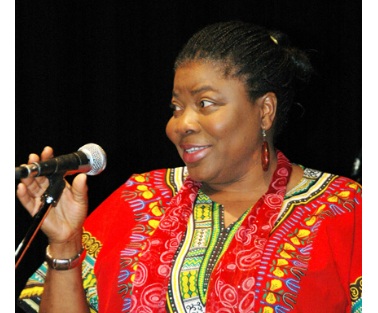
Funke Oba
Author: Funke Oba is the immediate past president of the African Canadian Association of Waterloo Region & Area. Funke teaches social work, is a diversity trainer/consultant and community based researcher with a focus on social justice, equity and social construction of complex phenomena.
Find more community responses from colleague’s in Waterloo Region who also work with young men:
Posted on: October 10th, 2013 by Smart on Crime
The Snapshot in Time: Root Causes of Crime in Waterloo region data on Young Males 15 – 24, by itself, is good information to have but I don’t think that an increase in the population of males aged 15-24 is any reason for alarm. The data clearly shows that the rise in the number of males aged 15-24 across the Region, as a percentage of the population, is holding steady at 7.2% to 7.4%. We also know that the vast majority of youth crime is being committed by a small number of young offenders. With this information, it gives us sense of size and scope youth male crime/victimization. As a community, we should be taking a strategic/focused approach, first to determine what the root causes of crime are as it relates to this cohort. Secondly, what are some of the best/promising practises that can be done prevent young males from being involved in crime and being victims of crime in the first place.
inREACH, a youth street gang prevention project, is an initiative that is designed to work with young men and women who are involved or at risk of being involved with gangs. inREACH is comprised of two program phases, Community Treatment & Community Mobilization. The Community Treatment phase provides 1-on-1 support in areas of mental health, addictions, employment and overall case management. 94.2% of the participants in the Treatment phase are male with the average age being 18.7 years old, with risk factors such as gang involvement, severe addictions, criminal justice involvement and living/lived in care, it is clear that inREACH is a program that has found away to connect with some of the most at risk male youth in our community. The Community Mobilization phase, happens in four communities through out the region and is focused on prevention. Youth Workers engage youth in these communities by finding out what there strengths/interests are, working with the youth to develop the programs and lastly, having the youth play a key role in the delivery of these programs and having a say in any key decisions about the programs. inREACH has managed to be successful for several reasons. inREACH a multi-disciplinary project, that provides client centred, wrap-around supports to young people that we see as assets to our community and having more then just deficits. inREACH is a collaborative project and all of our community partners are fully engaged in working to address the issue of youth gangs in our community.
There is a lot more that can and should be done. I think that Federal, Provincial , Municipal governments and funding organizations should be focused and work collaboratively to support and enhance all of the work that is being done front line to address the issue of youth gangs, male youth violence & victimization. The majority of inREACH program participants were male, from single parent homes, unemployed and already involved with the criminal justice system. If we use a prevention lens, we know that these youth didn’t just wake up one day with all of these risk factors. They have lived and been exposed to risks most of their young life, so participation in a gang is just the symptom of deeper more complex issues. We need programs that aren’t cookie cutter and pre packaged, we need to develop, support and enhance programs that take a holistic long term approach to supporting our most at risk youth. At the end of the day, they are all of our youth and we have a collective responsibility to ensure that they stay safe, not become criminally involved and are also supported so they can become potential that is fully realized.
Author: Rohan Thompson is the Project Manager for inREACH and staff of the Waterloo Region Crime Prevention Council. inREACH is a collaborative, multi-disciplinary program designed to intervene/prevent gang involved or gang vulnerable youth from being involved in gang activity or exiting their gang. Rohan has been involved in working with at-risk youth for over 15 years. He is an avid football fan and is a proud supporter of Wilfrid Laurier Football.
Find more community responses from colleague’s in Waterloo Region who also work with young men:
Posted on: October 8th, 2013 by Waterloo Region Crime Prevention Council
Young males commit most violent crimes in Canada and they are at a higher risk of being a victim of crime. Young males are more likely than other age and gender cohorts to be involved in petty crime such as vandalism and graffiti. As such, the number of males aged 15 to 24 in a community is likely to have an impact on the crime rate. The chart below measures the absolute number of males 15 to 24 living in the Waterloo Region and the percentage of the overall population made up of males 15 to 24.
The Statistics
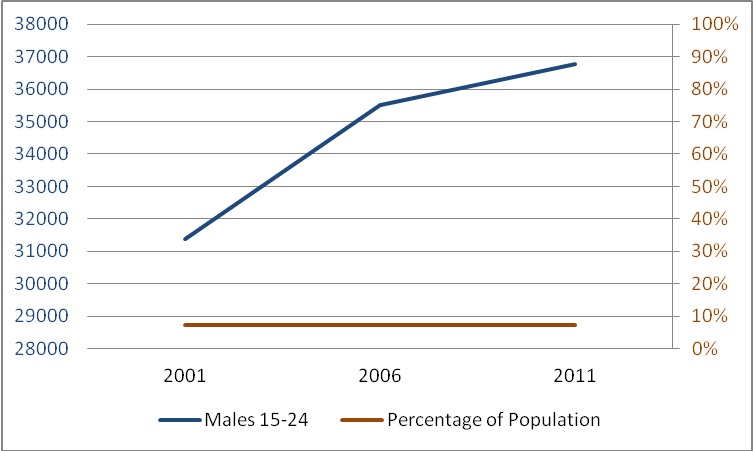
Date Source: Statistics Canada, Census (Released Every Five Years)
The Story Behind the Numbers
The number of males in Waterloo Region, aged 15 to 24, is slowly increasing. However, this increase is currently similar to the increase in the overall population in Waterloo Region. Therefore the percentage of the male population 15 to 24 is remaining steady at between 7.2% and 7.4%.
Read the Community Responses:
Posted on: September 17th, 2013 by Waterloo Region Crime Prevention Council
The length of involvement in schooling significantly impacts participation in criminal activity and the probability of incarceration. The table below tracks the percentage of residents in the Kitchener-Cambridge-Waterloo Census Metropolitan Area that do not have a high school diploma.
Data Source: Statistics Canada, Census (Released every five years)
Story Behind the Numbers
In 2006, 23.8% of residents in the Kitchener-Cambridge-Waterloo CMA did not have a high school diploma. This is the exact same as the Ontario provincial average and slightly above the Canada average of 23.4%. However, when the results are examined for individuals under the age of 35, the Waterloo Region has more residents without a high school diploma than the Provincial average. This is significant because individuals under the age of 35 are at the highest risk of participating in criminal activity.
Read the Community Responses
Posted on: September 17th, 2013 by Smart on Crime
It is no surprise that the length of involvement in schooling significantly impacts participation in criminal activity and the probability of incarceration, as found in Snapshot in Time: Root Causes of Crime in Waterloo Region. In fact, this has been well-known in the education sector for many years – which explains the great lengths to which school boards go in mitigating against this problem.
As part of the Student Success Learning to 18 Strategy — through the Re-engagement (12 & 12+) Initiative – school boards contact students who have either left school or have not been attending to re-engage them in their studies to complete their Ontario Secondary School Diploma (OSSD). Funding is provided to the boards to support programs for these students once they return and in Waterloo Region’s Catholic Schools we dedicate a significant amount of staff time to, first, actually locating the whereabouts of these students and then helping them complete their required volunteer hours and/or registered them at our St. Louis Adult Learning & Continuing Education Centres or their home secondary school to accumulate credits toward the OSSD.
The tracking of all of our in-risk students (Grade 9 to those that have left our system without an OSSD) is reported to the Ministry of Education along with other student success tracking data through “Taking Stock” reports. These reports outline the following:
- how many students our schools are tracking that are in-risk;
- are these students attached to a caring adult;
- was their timetable individualized;
- are they getting advice on pathways planning;
- has a strengths profile been created for the student.
Our own internal tracking for students who have left our system without an OSSD looks at:
- number of students contacted;
- did they register for courses, how many;
- how many credits did they accumulate.
In addition to the above some key initiatives are in place to meet the needs of all of our students on their way to successful completion of the OSSD.
- Specialist High Skills Majors allow students to focus on a future career through a bundle of classroom courses, workplace experiences and sector certifications
- Expansion of Cooperative Education allows students to count this hands-on learning towards two compulsory high school credits
- E-Learning provides students with online courses and allows teachers to share resources across the province
- Dual Credits count toward a student’s high school diploma as well as a college certificate, diploma or apprenticeship certification
- Credit rescue programs intervene prior to a student experiencing failure in a course
- Credit recovery programs allow students who have failed a course to only repeat expectations where they have been unsuccessful rather than redoing the whole course
- Supervised Alternative Learning programs allow students to work full-time, get mental health supports, volunteer hours and accumulate credits
So…when it comes to playing our role in reducing the number of local residents without a high school diploma you can rest assured Waterloo Region’s Catholic Schools are front and centre in closing the gap.
Author: David DeSantis is the Superintendent of Learning for the Waterloo Catholic District School Board and responsible for Student Success, Secondary Schools, St. Mary’s FOS, Leadership Development and Succession and 21st Century Teaching and Learning.
Posted on: September 4th, 2013 by Waterloo Region Crime Prevention Council
Crime prevention, social capital, neighbourhood cohesion… all the stuff of Jane Jacobs and Mr. Rogers! In this latest episode of “By The Numbers” Anthony Piscitelli pays homage to a certain friendly neighbour in order to give you the highlights of a recent report from the Waterloo Region Crime Prevention Council.
You can find the full report here.
What do you think…. does your neighbourhood have a high level of social capital? Or do you live in a neighbourhood that has a high fear of crime? What does your neighbourhood do to build community and social capital?
I’d love to hear your stories!
Posted on: August 8th, 2013 by Smart on Crime
Women’s Crisis Services of Waterloo Region operates two emergency shelters for abused women and their children: Anselma House in Kitchener and Haven House in Cambridge (for a total of 75 beds) plus a regional Outreach program. We are the only agency of its kind in Waterloo Region.
Annually, Women’s Crisis Services provides assistance (shelter and outreach services combined) to about 2,600 women and their children; approximately one third of this number is children. According to Stats Canada, less than one quarter of victims of domestic violence report the incident to police. In Waterloo Region, with a population of approximately 550,000 residents, police respond to about 6,100 domestic violence calls per year. If this number reflects one quarter as suggested by Stats Canada, then 24,400 women in our community are being abused. Even for those of us who do not excel in math, one is easily able to decipher that these numbers are quite bizarre; especially when considering the number of abused women and their children that Women’s Crisis Services is assisting per year. Undoubtedly, we have much work to do in ending violence against women here in Waterloo Region.
Did you know that every six days, another woman in Canada is murdered by her current or former partner? And, every night in Canada, more than 3,000 women (along with their 2,500 children) stay in an emergency shelter because it’s not safe for them at home. This is beyond deplorable! Why is it that in 2013, after centuries of male domination that we are still tolerating abuse against women and children in our society and moreover in our community? Further, why doesn’t our government create a system whereby the women and children remain in the family home and the abuser is removed?
2013 marks the 35th anniversary of Women’s Crisis Services; having provided shelter and outreach services to our community since 1978. A few trends have been evidenced over the past decade. Our agency has experienced a steady decline in crisis phone calls and simultaneously a significant increase in shelter stays; to the point whereby in 2011 Anselma House opened its new 45 bed facility, replacing the previous 20 bed building. We are now planning to rebuild Haven House also, in order to continue meeting the needs of abused women and their children in Waterloo Region. Instead of building bigger shelters, we need to turn our minds to how we collaboratively eradicate violence against women.
One of our agency’s primary objectives is our commitment to continuous improvement; more so now than ever, in order to meet the needs of the younger generation whose methods of communication style are through social media. Abuse takes on many faces in addition to physical assaults. Stalking has and continues to be a serious misuse of power and control in relationships. This is exacerbated through the use of texting by abusers. Many of our young women do not view obsessive texting as abusive; but rather as a display of affection. This is just one example of how our awareness and education needs to shift in order to reach this and future generations.
With our 35 year history, comes the stark reality that we are now serving the third generation of abused women in the same families. Breaking the intergenerational cycle of abuse is critical to the eradication of violence against women. Doing so requires the input and assistance of our community…and that means each of us. Violence against women is a societal issue and therefore requires a community response. We need to be diligent and active. Each of us needs to make a pledge that abuse is unacceptable and we will not tolerate it…ever. And then we need to turn our commitment into action and when we become aware of an abusive situation, we need to intervene rather than view the matter as a private one and look the other way. It is only by working together in partnership that violence and abuse against women in our community will be reduced and eventually eradicated.
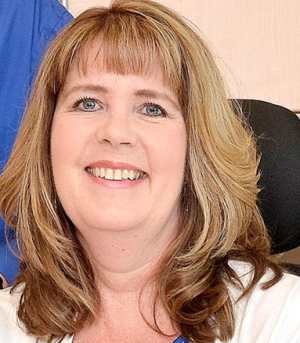 Author: Mary Zilney
Author: Mary Zilney
Mary Zilney has a Master’s degree in Social Work from Wilfrid Laurier University. For the past 8 years, she has held the position of Chief Executive Officer of Women’s Crisis Services of Waterloo Region. Mary has worked in the area of family violence for almost 20 years.
Posted on: June 27th, 2013 by Waterloo Region Crime Prevention Council
Over the next ten weeks stay tuned here to the blog discussion on The Root Causes of Crime in Waterloo Region where community leaders, community residents and leading experts across Waterloo Region weigh in on the root causes of crime outlined in the report.
Income of Low Income Families
Neighbourhoods that are at an economic disadvantage when compared to other areas report higher crime rates. In addition, societies where wealth is concentrated amongst a small group of individuals report higher crime rates. The graph below shows the average income of individuals in the Kitchener-Cambridge-Waterloo CMA and compares it to the average income of low income individuals in this area. This chart tracks the gap between low income individuals and those with significantly better economic means.
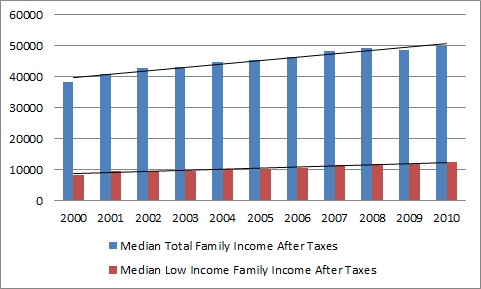 Source Date: Statistics Canada, CANSIM Table 111-0015 (Released Annually)
Source Date: Statistics Canada, CANSIM Table 111-0015 (Released Annually)
The Statistics
The gap between low income families and the middle income families is growing in the Kitchener-Cambridge-Waterloo CMA. This gap is largely the by-product of stagnant incomes for low income individuals. This growth disparity in the distribution of income suggests low income families in Waterloo Region are not benefiting equally from economic growth.
Read the Community Responses


 Sharing the story of the Accelerator Centre with 50
Sharing the story of the Accelerator Centre with 50 

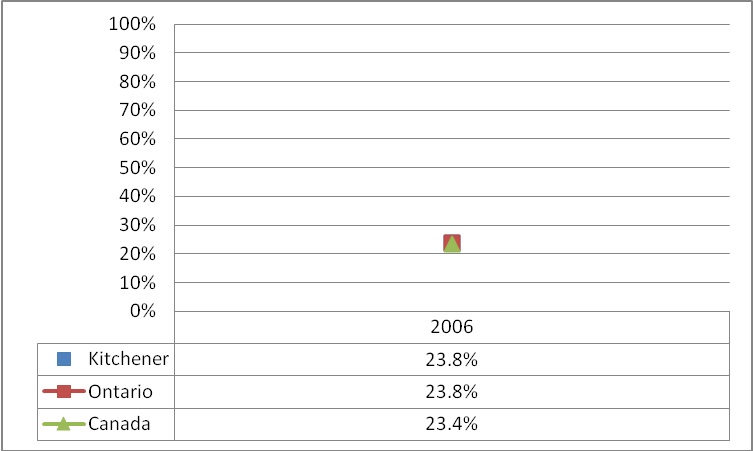
 Author: Mary Zilney
Author: Mary Zilney Source Date:
Source Date: